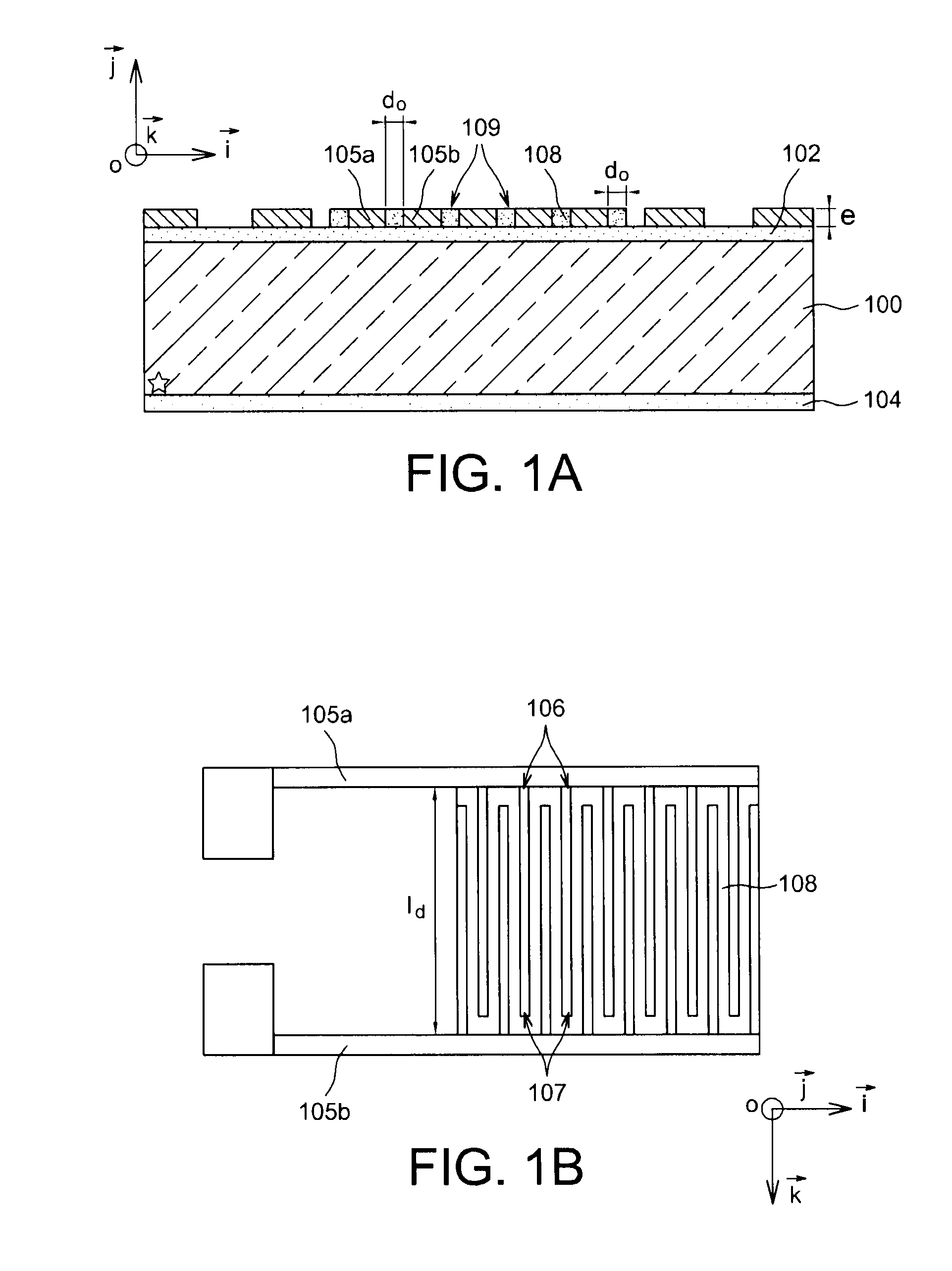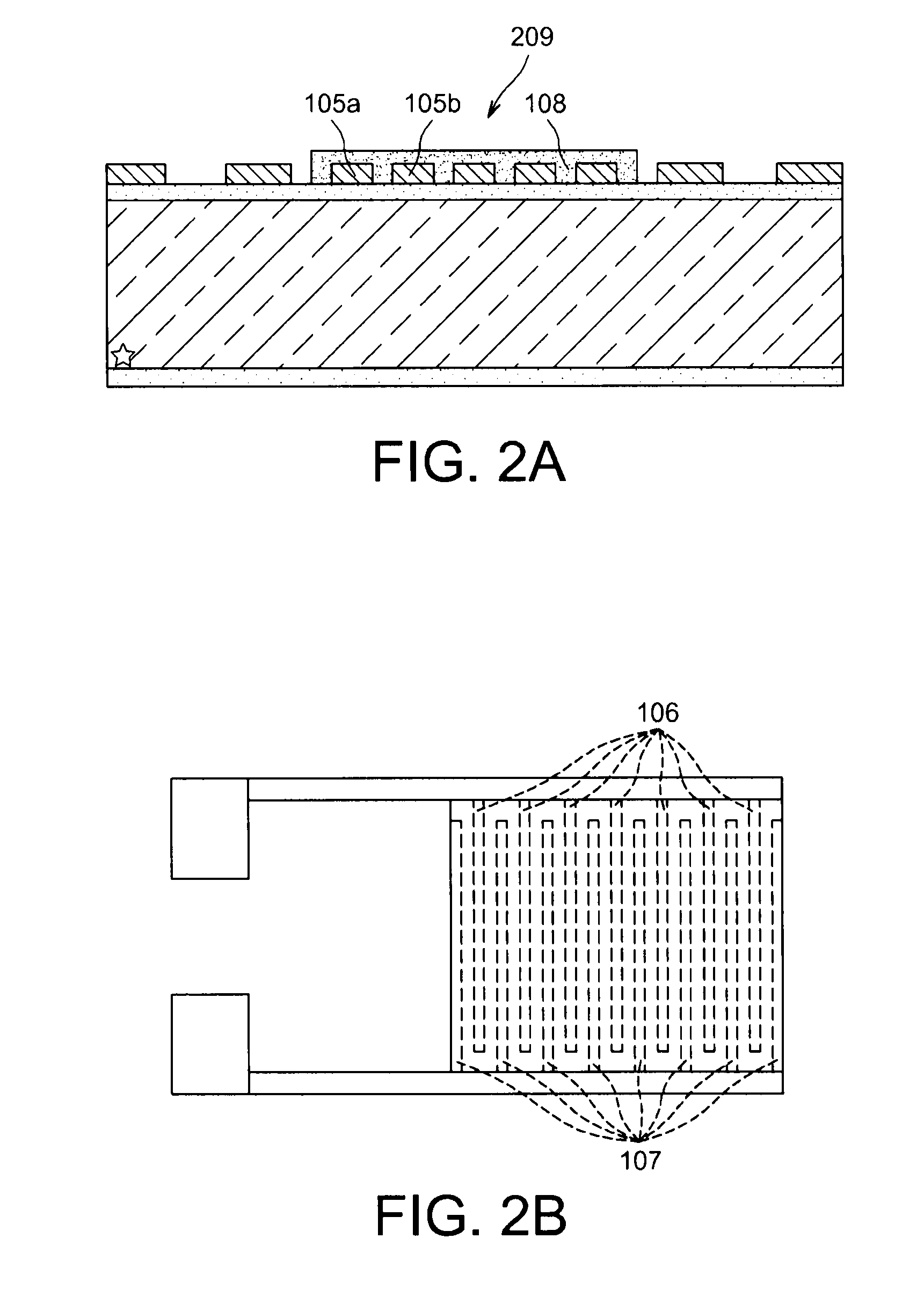Capacitive humidity detector with nanoporous hydrophilic dielectric
a humidity detector and nanoporous technology, applied in the field of humidity detection and/or measuring devices, can solve the problems of inability to use on an industrial scale, inability to set up a cooling system, and inability to achieve a simple method, so as to increase the hydrophilic nature of the sensor and increase the sensitivity of the sensor
- Summary
- Abstract
- Description
- Claims
- Application Information
AI Technical Summary
Benefits of technology
Problems solved by technology
Method used
Image
Examples
Embodiment Construction
[0073]One example of a humidity sensor of capacitive type produced according to the invention is given in FIGS. 1A-1B.
[0074]The humidity sensor is formed on a substrate or wafer 100, which may be in semiconductor material e.g. Si. The wafer 100 is coated with insulating layers 102, 104, respectively on its upper face and lower face. For example, these insulating layers 102, 104 may be formed by thermal oxidation of the substrate.
[0075]The sensor comprises electrodes 105a, 105b of at least one capacitor, which may each comprise a comb-shaped pattern. In FIG. 1B, the comb-shaped electrodes 105a, 105b have interdigitated teeth (respectively referenced 106 and 107).
[0076]The insulating layer 102 formed on the upper surface of the substrate can avoid the formation of short-circuits between the electrodes.
[0077]A nanoporous dielectric material 108 is positioned between electrodes 105a, 105b and in this example is distributed over the same plane as the latter. Therefore, the thickness e of...
PUM
 Login to View More
Login to View More Abstract
Description
Claims
Application Information
 Login to View More
Login to View More - R&D
- Intellectual Property
- Life Sciences
- Materials
- Tech Scout
- Unparalleled Data Quality
- Higher Quality Content
- 60% Fewer Hallucinations
Browse by: Latest US Patents, China's latest patents, Technical Efficacy Thesaurus, Application Domain, Technology Topic, Popular Technical Reports.
© 2025 PatSnap. All rights reserved.Legal|Privacy policy|Modern Slavery Act Transparency Statement|Sitemap|About US| Contact US: help@patsnap.com



